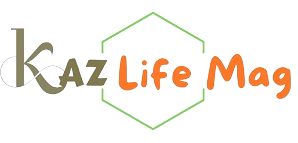The article explores the controversial topic of Hisashi Ouchi real photos, documenting the aftermath of the Fukushima Daiichi nuclear disaster. It delves into the ethical complexities surrounding the publication and impact of these images, highlighting their role in shaping medical ethics, policy, and public awareness of radiation exposure consequences. Through a detailed examination of Ouchi’s story, the article navigates the intersection of scientific curiosity and human rights, urging reflection on the moral responsibilities inherent in medical research and journalism.
The Fukushima Daiichi Incident: A Tragic Beginning
The story of Hisashi Ouchi begins with the tragic nuclear disaster at Fukushima Daiichi in Japan. On September 30, 1999, a criticality accident occurred at the JCO Tokai-Mura nuclear reprocessing plant, exposing three workers, including Ouchi, to fatal levels of radiation. The incident not only highlighted the dangers of nuclear energy but also thrust Ouchi into the spotlight as a symbol of human suffering in the face of scientific progress gone awry.
The Immediate Aftermath: Medical Response and Controversy
Following the accident, Ouchi and his colleagues were rushed to the University of Tokyo Hospital, where doctors faced an unprecedented challenge. The levels of radiation exposure were so severe that conventional treatments were rendered ineffective. Ouchi’s body began to deteriorate rapidly, leading medical professionals to grapple with ethical questions regarding the limits of treatment and the quality of life.
The Unforgettable Images: Hisashi Ouchi’s Photographs
One of the most enduring aspects of Hisashi Ouchi’s story is the series of photographs documenting his medical treatment. These images, which captured Ouchi in a state of profound suffering, have sparked intense debate and controversy. Critics argue that the publication of these photos constitutes an invasion of privacy and exploitation of human suffering, while others contend that they serve as a necessary reminder of the consequences of nuclear disasters.
Ethical Concerns: Privacy vs. Public Awareness
The publication of Hisashi Ouchi real photos has ignited a fierce ethical debate within the medical and journalistic communities. On one hand, advocates argue that sharing these images raises awareness about the devastating effects of radiation exposure and the need for stringent safety measures in nuclear facilities. Critics assert that sensationalist journalism and public curiosity compromised Ouchi’s privacy and dignity.
Scientific Curiosity vs. Human Rights
At the heart of the controversy surrounding Hisashi Ouchi’s photos lies a fundamental tension between scientific curiosity and human rights. While the images have undoubtedly contributed to our understanding of radiation sickness and its effects on the human body, they also serve as a stark reminder of the ethical responsibilities that accompany scientific research. Balancing the pursuit of knowledge with respect for human dignity remains an ongoing challenge in fields where experimentation and observation intersect with human subjects.
Lessons Learned: Impact on Medical Ethics and Policy
The case of Hisashi Ouchi has had a profound impact on medical ethics and policy, prompting institutions worldwide to reexamine their protocols for handling cases of radiation exposure and other catastrophic injuries. In response to the lessons learned from Ouchi’s tragic ordeal, stakeholders have strengthened the ethical guidelines governing the treatment of human subjects in medical research.
Remembering Hisashi Ouchi: A Call for Compassion and Understanding
Reflecting on Hisashi Ouchi’s legacy and the photo controversy requires compassion and understanding. His story reminds us of life’s fragility and ethical challenges for medical professionals. Honoring his memory and privacy ensures his suffering isn’t in vain, urging a future of empathetic scientific progress. Click here for more information.

